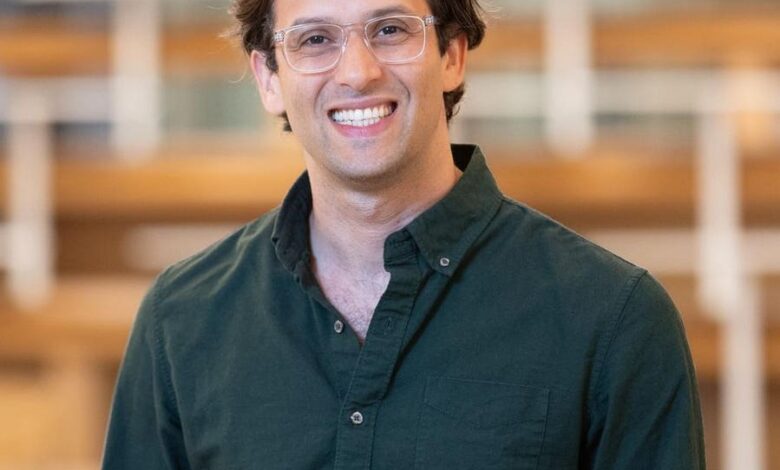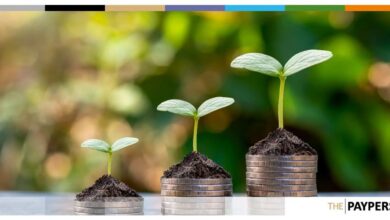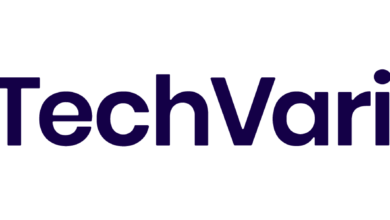Interview With Noom’s Former Senior Director Of Product Management Jack Breslauer

Jack Breslauer, Senior Director of Product at Noom
Jack Breslauer
As we chat, Jack plays fetch with his dog – it’s a lovely day in New York. He tells me he’s always been interested in designing environments for behavior change, from his start in public policy where he proposed using the traffic light system of food categorization (the green light means healthy, as you’d expect) and tying it to the price of food (healthier food is less expensive, also as you’d expect) to designing for behavior change in a startup he founded to promote screen time limits in the classroom for teens. In this interview, Jack shares some of the many ways he has leveraged behavioral design as a product leader to make products fun, rewarding, and less stressful to use.
Tell me something I don’t know. (Anything!)
The famous industrialist Armand Hammer ended up coincidentally owning a large stake in the baking soda company Arm and Hammer.
Which fiction book would you recommend to product leaders? Why?
Snow Crash by Neil Stephenson or Tomorrow Tomorrow Tomorrow by Gabrielle Zevin. Both are stories about people designing and living in virtual worlds that will resonate with those of us who like to build things.
How have you leveraged behavioral design in your work? What was the result?
Noom’s product is chock full of behavioral design, and it’s probably our main point of competitive differentiation.
To give a couple of examples, we introduced a ‘Treat Day’ concept so users can choose to ease up on the program when they know they have travel, a disruption, or just need a break. This helps combat the ‘all or nothing thinking’ that is so prevalent during weight loss where users stick rigidly to the program in an unsustainable way, hastening the moment where they fall off the wagon and making it harder to get back on. Users can both plan Treat Days ahead (a planned deviation from a goal), and use them retroactively as an “emergency reserve.” And the Treat Day intervention improved long term retention by 6% without harming weight loss at all.
We also designed a weigh-in feedback feature to leverage reframing techniques. For many users, stepping on the scale is a moment of harsh judgment and negative self-talk. Our weigh-in feedback helps retrain users to have a more equanimous internal dialogue by reminding them that weight loss is noisy and indirect, helping them both be resilient on disappointing days, and not get ahead of themselves when the scale ticks down. This increased the number of users who stuck with the program long term by 8%, and we saw it get more powerful over time as users got more exposure to the feedback and began to internalize it.
What’s your biggest barrier to getting things done as a product leader?
As a product leader my greatest responsibility is ensuring that my TEAM is able to get things done, and by nature the ‘bottleneck’ is always changing – from projects needing more design iteration, to uncovering gnarly technical challenges, to securing cross-functional alignment. My job is to provide as much air cover to my team as possible to remove these bottlenecks, which requires a combination of tie-breaking, diplomacy and pitching in myself.
Just as important is helping the team zoom out and decide what not to do. The potential upside of descoping work that, while valuable, won’t really move the needle, is much greater than trying to squeeze more productivity out of the team – especially if it is already high-performing.
What gap do you see in typical product strategy that behavioral insights can fill?
Too often, product roadmaps and the problem statements underpinning them are exclusively functional (e.g., ‘reduce steps to purchase’ or ‘allow users to change delivery date’). Of course there are important functional user stories in every product, but if you want users to really value and look forward to using your product, it’s important to lean into the psychology of the user.
How can we make the things a user must do feel less like work and more like learning or play? For example, Slack became a mainstream workplace communication platform in part by normalizing the use of images, gifs and emojis in work conversations.
How can we make the product feel more rewarding and valuable? For example, Reddit uses ‘karma’ to concretize and quantify the value that users give to the community with their posts and responses, creating a feeling of reciprocity and status.
And how can we frame decisions the user has to make in a way that reduces decision anxiety and fatigue, but gives opinionated users the options they need? At Noom, we think very carefully about how to position each decision we give a user in the app (e.g., as neutral, opt-in, or opt-out), and whether to create a decision point at all.
How do you see product management evolving over the next 5 years? What are your hopes for the practice?
As a generation of GPTs descends upon us, my hope is that product managers will be freed from some of the drudgery of requirements definition, QA, managing edge cases and shifting tickets around.
This could free them up to do deeper user, competitive and quantitative research, evaluate a broader and more creative range of ideas to design and prototype them rapidly with yet more AI support to get proof of concept.
There is also a risk, though – if PMs don’t learn to bring a creative, strategic or customer-centric voice to the table and instead operate largely as coordinators of work, they risk being squeezed out by the coming wave of AI-driven productivity advances.
This will also challenge the standard PM career ladder, which generally starts with an executional / tactical focus. How will we bring new PMs into the discipline if these entry level tasks are largely automated?
What advice would you give product leaders hoping to design for humans?
The good news is that if you are reading this, you are (probably) a human yourself!
Use your product obsessively and document your moments of excitement and frustration fastidiously. Talk to humans and train your empathy muscle. Talk to so many humans that you can build a ‘user simulator’ in your head where you can reliably predict how your target user might react to what you are considering building. This will increase your batting average markedly and reduce your dependency on ad hoc research and analysis.
Jack Breslauer is VP of Product at Resortpass. Before that, he was Senior Director of Product at Noom, where he oversaw the development of Noom’s behavior change programs and tools. Jack was previously co-founder and CTO of Riveted Labs, an edtech startup, and Head of Product at graze.com, a health snack company. Jack graduated from Princeton University and started his career in consulting at Bain & Co. He lives in Brooklyn.



